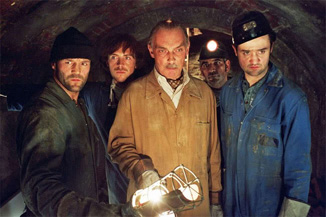|
|
Movie vs. Reality: The Bank JobBy Felix Quinonez Jr.September 6, 2012
Other reports suggest that the identity of the criminals and their sentences have been revealed. The Times (amongst other newspapers) reported in January 1973 that four men had been convicted of the robbery. Three of these men were Anthony Gavin, 38, a photographer from Dalston; Thomas Stephens, 35, a car dealer from Islington; and Reginald Tucker, 37, a company director from Hackney. They all pleaded guilty and received 12 years imprisonment. The fourth man, Benjamin Wolfe, 66, a fancy goods dealer from East Dulwich, pleaded not guilty but was eventually convicted and received eight years. Wolfe had signed the lease on the shop used by the robbers. Two other men accused of handling banknotes from the robbery were acquitted. According to one press report, it was believed that the mastermind of the crime was another London car dealer who was never caught. Verdict: Because of the mystery surrounding the case it is impossible for any movie to portray the events 100% accurately. For all we know, this could have actually been the way it happened but there is no way to prove it. It is best to think of this movie as depicting one of the many different ways the events could have gone down. While it does have some verifiable fabrications it is still close enough to reality. The movie’s biggest success is that it shines a light on a very bizarre and strange bank heist that seems to have been largely forgotten (I didn’t know about it). It not only depicts one of the many theories surrounding the event but it sparks an interest in finding out more about it. Once you’ve seen the movie, you can’t help but feel the urge to go out and learn more about the events that inspired it because sometimes fact really is stranger than fiction. Next Time: United 93
[ View other columns by Felix Quinonez ]
[ View other Movie vs. Reality columns ]
[ Email this column ]
|

|
|
|

|
Monday, April 29, 2024
© 2024 Box Office Prophets, a division of One Of Us, Inc.


